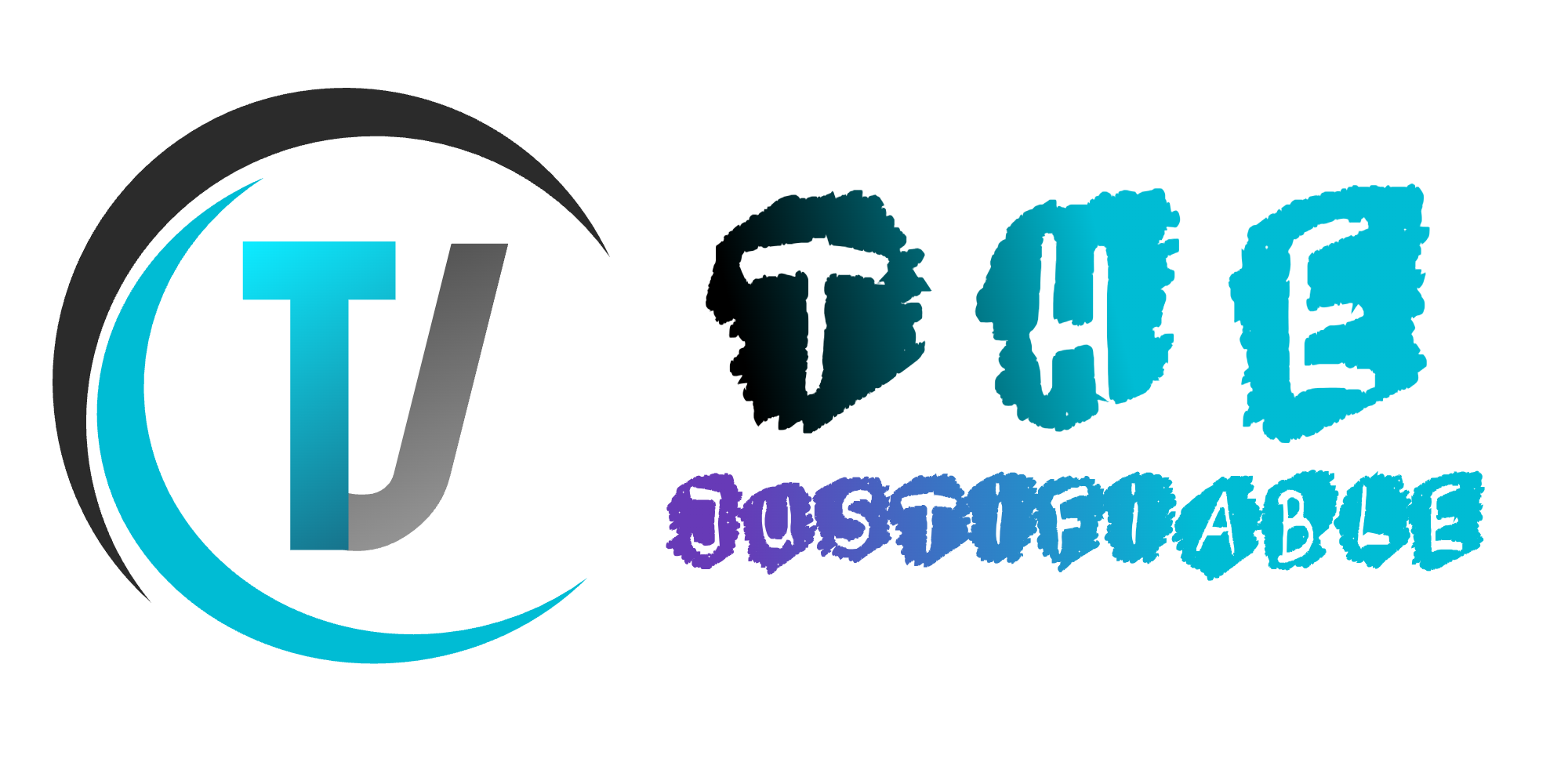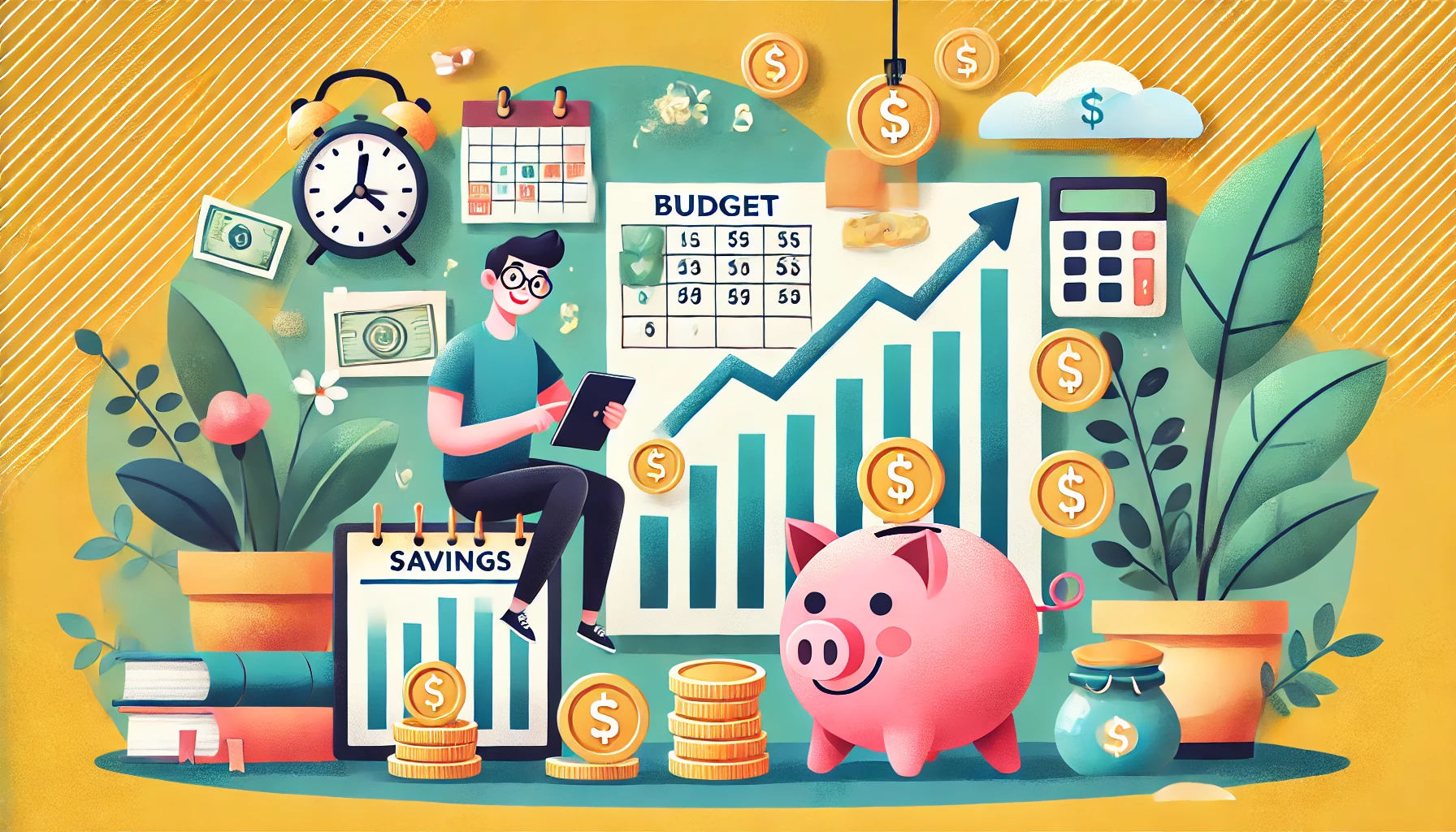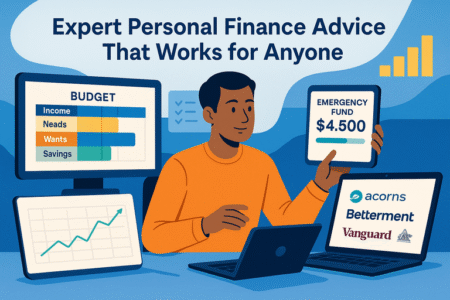Table of Contents
Personal finance management can feel overwhelming, can’t it? Are you struggling to stick to a budget, cut down on expenses, or finally start saving for that dream vacation or a rainy day? In this guide, we’ll explore practical, actionable tips to take control of your finances and grow your savings faster than you thought possible.
From smart budgeting strategies to leveraging technology, you’ll discover easy ways to manage your money, reduce stress, and achieve your financial goals. Ready to take the first step toward better savings and financial freedom? Let’s dive in!
Effective Personal Finance Management Strategies
When it comes to managing your money, having a solid strategy can make all the difference. Let’s explore proven techniques that help you stay on top of your finances, from budgeting basics to building financial security.
Understanding the Basics of Budgeting
Budgeting is the cornerstone of personal finance management. Without a clear budget, it’s easy to lose track of where your money is going, leaving you feeling overwhelmed. But creating a budget doesn’t have to be complicated.
A good starting point is to categorize your expenses: fixed costs (like rent or mortgage), variable costs (such as groceries or entertainment), and savings. By prioritizing these categories, you can see where your money flows. One common approach is the 50/30/20 rule: allocate 50% to needs, 30% to wants, and 20% to savings or debt repayment. This simple formula ensures balance without overcomplicating things.
Technology can also make budgeting easier. Apps like Mint or YNAB (You Need a Budget) allow you to track expenses in real-time, helping you stay on course. In my experience, manually tracking expenses can feel tedious, but tools like these make it almost effortless.
The most important part of budgeting is sticking to it. Consistency builds the habits that lead to long-term financial stability. What small change can you make in your budget today?
Setting Financial Goals for Short and Long Term
What are you saving for? Whether it’s an emergency fund, a vacation, or retirement, defining your goals gives your finances direction. Without clear goals, it’s like sailing without a destination—you’ll drift, but you won’t get anywhere meaningful.
For short-term goals, focus on achievable milestones, such as saving $500 for unexpected car repairs or cutting spending by $100 a month. These goals are motivating because they’re within reach. Long-term goals, like buying a house or retiring early, may feel distant, but breaking them into smaller chunks makes them more manageable.
One trick is to assign specific amounts and timelines to your goals. For example, “Save $10,000 for a down payment in three years.” With this clarity, you can determine how much to set aside monthly. Remember, the earlier you start, the more time your savings or investments have to grow.
Staying motivated is easier when you celebrate small wins along the way. For instance, every $1,000 saved could be a reason to treat yourself—within your budget, of course!
Tracking and Managing Monthly Expenses
Ever wonder where your paycheck disappears to? Tracking your monthly expenses is the key to uncovering spending habits and making adjustments. You might be surprised how much those daily coffee runs or impulse purchases add up.
Start with a simple system: review your bank and credit card statements. Highlight recurring charges like subscriptions or memberships you might have forgotten about. Canceling unused services can free up extra cash instantly.
Once you identify patterns, it’s easier to cut back. For example, meal prepping instead of dining out or switching to a more affordable phone plan can save hundreds annually. Even minor tweaks like setting a spending limit for entertainment can make a difference.
Regularly reviewing your expenses ensures your spending aligns with your budget and goals. Make it a habit—set a specific day each month to assess your finances. Trust me, it’s empowering to see exactly where your money is going and how much you’re saving.
Creating an Emergency Fund for Financial Security
Life is unpredictable, and unexpected expenses—like medical bills or car repairs—can derail your finances if you’re not prepared. That’s where an emergency fund comes in. Think of it as your financial safety net.
Experts often recommend saving three to six months’ worth of living expenses. While this might sound intimidating, starting small is perfectly okay. Even setting aside $20 a week adds up over time.
Where should you keep your emergency fund? A high-yield savings account is a great option. It’s accessible when you need it but still earns interest, helping your money grow while it waits.
Building an emergency fund is about consistency. Automating your savings—transferring a fixed amount from your paycheck directly into your fund—removes the temptation to spend that money elsewhere. In my experience, treating your emergency fund like a non-negotiable expense works wonders.
Once you have this safety net in place, you’ll feel a sense of peace knowing you’re prepared for whatever comes your way. Isn’t that worth the effort?
Pro Tip: Start with what you can manage. Even saving a few dollars each week for an emergency fund or tweaking your budget slightly can build momentum. Small, consistent actions compound into significant financial security.
Smart Ways to Save Money Daily

Making small, intentional changes to your daily spending habits can lead to significant savings over time. Here’s how you can identify opportunities to save money and keep more of your hard-earned cash.
Identifying and Cutting Unnecessary Expenses
Have you ever looked at your bank statement and wondered, “Where did all my money go?” Hidden expenses often add up without us noticing. Identifying these costs is the first step toward taking control of your finances.
Start by reviewing all your monthly subscriptions. Are you still using that gym membership or multiple streaming services? Canceling unused subscriptions is an easy way to free up money instantly. Similarly, watch out for smaller recurring charges, such as delivery fees or premium app upgrades, that don’t provide enough value.
Another tip is to analyze your daily spending habits. Do you frequently buy coffee on the go or rely on takeout meals? Making coffee at home or meal prepping for the week can save you hundreds of dollars annually. It’s not about cutting out every small pleasure but being mindful of what’s truly worth your money.
To make this process simple, try a spending tracker app. These tools categorize your expenses and highlight areas where you might be overspending. It’s eye-opening to see how small changes, like cooking at home more often, can add up to big savings.
Leveraging Cashback Apps and Reward Programs
Why not get rewarded for spending money you’re already planning to use? Cashback apps and reward programs are excellent tools for stretching your budget further.
Popular cashback apps, such as Rakuten or TopCashback, offer a percentage back on purchases you make through their platforms. Whether you’re shopping for groceries, clothes, or booking travel, these rewards can add up over time. For example, I once earned $50 back just from booking a vacation through a cashback platform—it felt like a win for my wallet.
Many credit cards also offer reward points or cashback incentives. Look for one that aligns with your spending habits, whether it’s earning points on groceries, travel, or gas. However, be cautious: only use credit cards if you’re confident you can pay off the balance each month to avoid interest charges.
Lastly, don’t overlook loyalty programs at your favorite stores. Whether it’s discounts, free items, or exclusive perks, signing up often costs nothing but delivers tangible savings.
Mastering Meal Planning and Grocery Shopping Tips
Food is a necessity, but it’s also one of the easiest areas to overspend. Meal planning and smart shopping can help you save money without sacrificing quality or nutrition.
Start with a weekly meal plan. Choose simple recipes that use overlapping ingredients to minimize waste and reduce costs. For example, if you’re buying chicken for one meal, plan another recipe to use the leftovers. This approach ensures every dollar spent on groceries works harder for you.
When you shop, always make a list—and stick to it. Impulse buys can quickly derail your budget. Consider shopping with cash instead of a card to enforce discipline and prevent overspending.
Another tip is to buy in bulk for staples like rice, pasta, or canned goods. Stores like Costco or Sam’s Club offer great deals on non-perishables. Just be sure to compare prices per unit to ensure you’re getting the best value.
Finally, avoid shopping when you’re hungry. It sounds simple, but a growling stomach can lead to unnecessary purchases. Mastering meal prep and grocery shopping not only saves money but also reduces food waste, making it a win-win.
Saving Money on Utility Bills and Subscriptions
Utility bills might seem fixed, but there are often opportunities to reduce them with a little effort. Small adjustments to your habits and energy usage can lead to significant savings.
Switch to energy-efficient appliances and LED light bulbs—they consume less power and last longer. You could also set your thermostat a few degrees higher in summer or lower in winter to cut down on heating and cooling costs. In my experience, even using a smart thermostat to schedule temperature changes when you’re away from home can make a noticeable difference.
Water usage is another area where small changes help. Shorter showers, fixing leaks, and running full loads in the dishwasher or washing machine can save gallons of water—and money—each month.
On the subscription front, consider bundling services, like phone, internet, and cable, if you use them all. Many providers offer discounts for package deals. Alternatively, if you’ve shifted to streaming, choose just one or two platforms instead of juggling several.
Taking these steps doesn’t mean giving up convenience or comfort—it’s about finding smarter ways to use resources while keeping more money in your pocket.
Pro Tip: Automate your savings from any cashback or utility bill reductions directly into a high-yield savings account. Watching your savings grow without extra effort is both motivating and rewarding!
Debt Management Tips for Financial Freedom
Managing debt is essential for achieving financial freedom. Let’s explore actionable strategies to tackle your debt effectively, avoid common pitfalls, and build a stronger financial future.
Prioritizing High-Interest Debt Repayments
High-interest debt, like credit card balances or payday loans, can quickly spiral out of control if not addressed. The key to overcoming debt is focusing on the most expensive liabilities first.
One effective method is the avalanche strategy. This involves listing all your debts and prioritizing repayments based on their interest rates, starting with the highest. Paying off high-interest debt first reduces the total amount of interest you pay over time, helping you save money.
If you’re struggling to allocate funds, start small. Redirecting even $50 a month toward your highest-interest debt can accelerate progress. It’s also helpful to negotiate lower interest rates with creditors. Many companies are open to working with you if you demonstrate a commitment to paying off your debt.
Automating payments ensures you never miss a due date. Late payments often result in fees and penalties, increasing your financial burden. In my experience, setting up automatic payments provides peace of mind and keeps your repayment plan on track.
The most important part? Celebrate every milestone. Paying off even one credit card or reducing a loan balance is a step closer to financial freedom.
Exploring Debt Consolidation Options
If managing multiple debts feels overwhelming, consolidating them into one loan might be the solution. Debt consolidation simplifies repayment, often reducing your overall interest rate and monthly payments.
Personal loans, balance transfer credit cards, and home equity loans are popular options for debt consolidation. For instance, transferring high-interest credit card balances to a card with a 0% introductory rate allows you to pay down the principal faster. However, it’s essential to pay off the balance before the promotional period ends to avoid higher rates.
Credit counseling agencies can also assist in developing a debt management plan. They negotiate with creditors to lower interest rates and consolidate debts into a single payment. It’s a structured and disciplined approach that many people find effective.
Before consolidating, ensure you understand the terms and any fees involved. While consolidation can be helpful, it’s not a one-size-fits-all solution. Evaluate whether it aligns with your financial situation and goals.
Avoiding Common Debt Traps and Pitfalls
Getting out of debt is challenging, but staying out requires avoiding common traps that lead people back into financial trouble. One frequent mistake is relying on credit cards for everyday expenses, especially without a plan to pay off the balance.
Impulse spending is another significant issue. It’s easy to justify a purchase with “I’ll pay it off later,” but these small decisions add up quickly. Tracking your spending and using a budget can help prevent this.
Another pitfall is failing to build an emergency fund. Without a safety net, unexpected expenses often lead to taking on more debt. Even saving a small amount regularly can protect you from financial setbacks.
Payday loans are particularly dangerous. Their exorbitant interest rates make them incredibly difficult to repay, trapping borrowers in cycles of debt. Exploring alternatives like borrowing from friends, family, or credit unions is often a better option.
Staying disciplined is the key to avoiding debt traps. Remind yourself of the stress-free life you’re working toward—being mindful of your long-term goals helps you resist short-term temptations.
Building Good Credit to Save on Interest Rates
Good credit opens the door to better financial opportunities, including lower interest rates on loans and credit cards. Improving your credit score takes time but pays off significantly.
Start by reviewing your credit report. Look for errors or discrepancies that might be dragging down your score and dispute them if necessary. Keeping your credit utilization ratio below 30% is another critical factor. This means using less than 30% of your total available credit limit across all cards.
Consistently making on-time payments is one of the most impactful steps in building good credit. Set reminders or automate payments to ensure you never miss due dates. In my experience, automating payments not only improves your credit score but also reduces stress.
If your credit history is limited, consider using a secured credit card. These cards require a deposit but help establish a positive payment record. Over time, this boosts your creditworthiness.
Remember, good credit isn’t just about loans—it can also lower insurance premiums and improve job prospects in some industries. Building and maintaining a strong credit profile is one of the smartest financial moves you can make.
Pro Tip: Create a personalized debt repayment plan that fits your financial situation. Combine it with an emergency fund to prevent falling back into debt during unexpected challenges. Taking control of your finances today ensures a brighter, debt-free tomorrow!
Investment Strategies to Boost Savings

Investing is one of the most effective ways to grow your savings over time. Whether you’re a beginner or an experienced investor, understanding key strategies can help you maximize returns and secure your financial future.
Exploring Low-Risk Investment Options for Beginners
Investing can feel intimidating, especially if you’re just starting out. But low-risk options are a great way to dip your toes into the market while protecting your hard-earned money.
Savings bonds, certificates of deposit (CDs), and money market accounts are excellent starting points. These options offer modest returns with minimal risk, making them ideal for beginners. For example, a CD locks in your money for a specific period at a fixed interest rate, ensuring predictable growth.
Another option is investing in index funds or exchange-traded funds (ETFs). These funds track a broad market index like the S&P 500, spreading your investment across many companies to reduce risk. What’s great about ETFs is their simplicity—you don’t need to pick individual stocks.
Real estate investment trusts (REITs) are also worth exploring. REITs allow you to invest in real estate without owning physical property, providing a steady income through dividends. They’re particularly appealing if you’re looking for passive investment options.
The key to low-risk investing is starting small and staying consistent. You might not see dramatic gains overnight, but over time, even modest investments can grow significantly.
Understanding the Importance of Diversification
You’ve probably heard the phrase, “Don’t put all your eggs in one basket.” Diversification is all about spreading your investments to reduce risk and increase stability.
By investing across different asset classes—stocks, bonds, and real estate—you create a balanced portfolio. For example, if the stock market takes a downturn, your bond investments can help offset potential losses. This balance ensures your savings continue to grow steadily.
Within each asset class, diversification is equally important. For instance, instead of buying shares in a single company, consider a mix of industries or sectors. This protects you from being overly dependent on the performance of one area of the market.
Diversification isn’t just about the types of investments but also about geography. Investing in international funds or companies can add another layer of stability, as global markets don’t always move in sync.
In my experience, keeping your portfolio diversified offers peace of mind, knowing you’re better equipped to handle market fluctuations. It’s not about avoiding risk entirely but managing it wisely.
Maximizing Employer-Sponsored Retirement Plans
Employer-sponsored retirement plans, like a 401(k), are one of the most powerful tools for growing your savings. If your employer offers a matching contribution, it’s essentially free money that boosts your retirement fund.
Contribute at least enough to qualify for the full match—it’s one of the smartest financial decisions you can make. For example, if your employer matches 100% of your contributions up to 5% of your salary, you’re doubling that portion of your savings instantly.
Another advantage of these plans is tax benefits. Contributions are typically pre-tax, meaning they lower your taxable income. This not only saves you money now but allows your investments to grow tax-deferred, compounding faster over time.
Don’t forget to review the investment options within your plan. Many 401(k) plans offer target-date funds, which automatically adjust their asset allocation as you approach retirement. It’s a hands-off option perfect for those who prefer simplicity.
If you’re self-employed or don’t have access to an employer plan, consider setting up a Solo 401(k) or SEP IRA. These accounts offer similar benefits, ensuring you don’t miss out on retirement savings opportunities.
Benefits of Starting a Roth IRA or Similar Account
If you’re looking for a tax-advantaged way to grow your savings, a Roth IRA is hard to beat. Unlike traditional retirement accounts, contributions to a Roth IRA are made with after-tax dollars, meaning your withdrawals in retirement are tax-free.
One of the biggest advantages of a Roth IRA is flexibility. You can withdraw your contributions (but not earnings) at any time without penalties. This makes it a great option if you’re saving for long-term goals but want access to your money in case of emergencies.
Roth IRAs also allow you to continue contributing as long as you have earned income, regardless of age. This is particularly beneficial if you plan to work part-time or freelance in retirement.
If your income exceeds the Roth IRA contribution limit, a backdoor Roth IRA conversion might be worth exploring. It’s a strategy that allows high earners to enjoy the same tax benefits through a workaround process.
Investing in a Roth IRA gives you tax-free growth, flexibility, and peace of mind, making it an essential tool in your personal finance management arsenal.
Pro Tip: Start small but stay consistent with your investments. Whether you’re contributing to a Roth IRA or diversifying your portfolio, automation is your best ally. Set up automatic transfers to your investment accounts—it’s a simple way to stay on track and watch your savings grow effortlessly!
Mastering Personal Finance with Technology
Technology has made managing your personal finances easier than ever. From budgeting apps to automation tools, leveraging these resources can streamline your financial planning and help you stay on top of your savings goals.
Best Personal Finance Apps for Budgeting and Saving
Managing your money starts with knowing where it’s going, and personal finance apps are perfect for that. They simplify budgeting, track expenses, and even provide insights into your spending habits.
Apps like Mint offer an all-in-one platform for tracking expenses, setting budgets, and monitoring your credit score. You can link your bank accounts to get a real-time snapshot of your financial health. For someone new to budgeting, Mint’s ease of use makes it a popular choice.
If you prefer a more hands-on approach, You Need a Budget (YNAB) is ideal. It focuses on giving every dollar a job, helping you take control of your money and align spending with your priorities. It’s particularly useful for paying off debt or saving for big goals.
For saving, apps like Acorns round up your purchases to the nearest dollar and invest the spare change. Over time, this passive saving strategy can grow your investments effortlessly.
Using these apps not only saves time but also builds financial awareness. Once you start tracking, it’s amazing how quickly you notice areas to cut back and save.
Automating Savings for Consistent Progress
One of the easiest ways to save money consistently is through automation. Automating your savings ensures that you prioritize saving before spending, making it a habit rather than an afterthought.
Set up automatic transfers from your checking account to a dedicated savings account. Many banks allow you to schedule these transfers weekly or monthly, and some even let you round up purchases to deposit the difference into your savings.
Apps like Chime and Digit take automation a step further. Chime automatically moves a percentage of your paycheck to savings, while Digit analyzes your spending patterns and transfers small, safe amounts into savings without you noticing.
Employers often offer direct deposit split options, allowing you to allocate part of your paycheck directly into a savings or investment account. This method works seamlessly and removes the temptation to spend the money before saving it.
Automating savings isn’t just convenient—it builds consistency and helps you achieve long-term goals without feeling the pinch of manual saving.
Tracking Financial Trends with Analytics Tools
Understanding your financial trends is essential for long-term planning, and analytics tools can provide valuable insights. These tools help you see where your money is going, how your habits are changing, and where you can improve.
Platforms like Personal Capital combine budgeting with investment tracking, giving you a comprehensive view of your net worth. It’s particularly useful for tracking retirement goals or monitoring investment performance.
For small business owners or freelancers, tools like QuickBooks offer expense categorization and cash flow analysis. These insights can help you make smarter financial decisions and avoid surprises during tax season.
Spreadsheets are another underrated option. Tools like Google Sheets or Excel, combined with simple templates, allow you to create custom trackers tailored to your needs. While it takes more effort upfront, the flexibility can be worth it.
The key to tracking trends is consistency. Review your analytics regularly—whether it’s weekly or monthly—to spot patterns and adjust your strategies as needed. It’s empowering to see progress over time and know that you’re actively improving your financial health.
Protecting Your Financial Data from Cyber Threats
As helpful as technology is for personal finance management, it’s important to prioritize security. Protecting your financial data should be a top concern in an age of increasing cyber threats.
Start with strong, unique passwords for every financial account. Use a password manager like LastPass or Dashlane to generate and store secure passwords. This ensures you don’t reuse the same credentials across multiple accounts.
Two-factor authentication (2FA) is another critical layer of protection. Apps like Google Authenticator or built-in options from your bank make it harder for hackers to access your accounts, even if they obtain your password.
Be cautious about public Wi-Fi when accessing financial information. A virtual private network (VPN) can encrypt your data and protect your activities from prying eyes.
Regularly monitor your accounts for unauthorized activity. Many banks and apps allow you to set up alerts for unusual transactions, ensuring you catch potential issues early. If you notice anything suspicious, report it immediately.
Taking these steps doesn’t just protect your data—it provides peace of mind, allowing you to focus on your financial goals without unnecessary worry.
Pro Tip: Combine the power of technology with consistent habits. Use budgeting apps to track spending, automate your savings for peace of mind, and invest in strong cybersecurity measures to protect your progress. It’s a simple recipe for financial success!
Developing Long-Term Financial Habits

Long-term financial success isn’t about quick fixes—it’s built on consistent habits that help you save, spend wisely, and grow your wealth. Let’s dive into practical ways to develop these habits and make them stick.
Embracing a Frugal Mindset for Sustainable Savings
Frugality isn’t about deprivation—it’s about making intentional choices that align with your financial priorities. By embracing a frugal mindset, you can reduce wasteful spending and focus on what truly matters.
Start with small changes, like cooking meals at home instead of dining out or opting for generic brands over name brands. These adjustments may seem minor, but over time, they can lead to significant savings. For example, skipping a $5 coffee daily saves over $1,800 annually—a noticeable boost to your budget.
Living frugally also means evaluating purchases with a critical eye. Ask yourself, “Do I really need this?” or “Will this bring lasting value?” Before spending on big-ticket items, give yourself a 24-hour cooling-off period to avoid impulse buying.
Frugality doesn’t have to feel restrictive. Instead, think of it as freeing up resources for things that bring you joy, like travel, hobbies, or investing in experiences. It’s about spending smarter, not less.
Adopting this mindset helps create a lifestyle that supports sustainable savings. Over time, these choices become second nature, making it easier to stick to your financial goals.
Regularly Reviewing and Adjusting Financial Plans
Financial plans aren’t “set it and forget it.” Life changes, and so do your priorities, so reviewing and adjusting your plans regularly is key to staying on track.
Set aside time each month to evaluate your budget. Are you sticking to your spending limits? Have any unexpected expenses thrown things off course? If so, identify areas to adjust, like cutting back on entertainment or reallocating funds to cover those costs.
Annual reviews are also crucial for assessing long-term goals. For example, you might increase your savings rate if you’ve received a raise or paid off debt. Conversely, if your expenses have increased, like starting a family, you may need to adjust your savings targets to accommodate.
Use tools like spreadsheets or budgeting apps to track your progress over time. Seeing how far you’ve come can be incredibly motivating and helps pinpoint trends in your financial habits.
Flexibility is just as important as consistency. Don’t be afraid to tweak your plans as your circumstances change. Whether you’re saving for a house, planning a big move, or preparing for retirement, regular reviews ensure your strategy aligns with your goals.
Educating Yourself About Personal Finance Trends
Financial literacy is a lifelong journey. Staying informed about personal finance trends helps you make smarter decisions and adapt to changes in the economy or new financial tools.
Start with accessible resources like personal finance books, blogs, or podcasts. Experts like Dave Ramsey and Suze Orman offer practical advice, while apps like Audible make it easy to learn on the go. For those who prefer community learning, joining forums like Reddit’s r/personalfinance can provide real-world insights and support.
Don’t shy away from understanding investment options, even if they seem intimidating at first. Resources like Investopedia or online courses break down complex topics like stocks, bonds, and mutual funds into manageable concepts.
Attending financial workshops or webinars is another excellent way to expand your knowledge. Many banks and organizations offer free events to teach budgeting, investing, and debt management skills.
Staying curious keeps you ahead of the curve. Whether it’s a new app, investment trend, or government policy affecting your finances, staying educated ensures you’re making decisions that benefit your future.
Celebrating Milestones to Stay Motivated
Financial journeys can feel overwhelming without moments of celebration to keep you motivated. Recognizing your progress—no matter how small—reinforces positive habits and helps you stay committed.
Set clear milestones within your financial goals. For example, if your goal is to save $10,000, celebrate when you hit the $2,500 or $5,000 mark. These checkpoints give you something to look forward to and keep you motivated along the way.
Celebrations don’t need to involve spending. Reward yourself with something meaningful, like a fun day out, quality time with loved ones, or simply acknowledging your hard work. The act of celebrating itself boosts morale.
It’s also helpful to reflect on what achieving each milestone represents. Did you manage to stick to your budget for six months straight? Pay off a significant portion of debt? Acknowledging these wins reminds you of why you started and how far you’ve come.
Keep a visual representation of your progress, like a chart or checklist, to track your milestones. Seeing the progress builds momentum and makes the journey feel rewarding at every step.
Pro Tip: Pair your financial milestones with non-monetary rewards. For instance, treat yourself to a day off or a hike in your favorite park when you hit a savings goal. Keeping the focus on progress rather than perfection helps make long-term habits stick!
Overcoming Financial Challenges with Confidence
Financial setbacks can feel overwhelming, but they don’t have to derail your long-term goals. With the right mindset and strategies, you can tackle unexpected expenses, build resilience, and maintain control of your finances.
Dealing with Unexpected Expenses Without Stress
Life is unpredictable, and unexpected expenses—like car repairs, medical bills, or urgent home fixes—can strain even the most well-planned budgets. However, addressing these challenges calmly and strategically can reduce stress and keep your finances on track.
Start with an emergency fund. If you’ve set aside three to six months’ worth of living expenses, you’ll have a buffer to handle sudden costs without turning to credit cards or loans. Even if your fund isn’t fully stocked yet, saving small amounts consistently builds a safety net over time.
For immediate expenses, evaluate alternatives before borrowing. Can you negotiate a payment plan with a service provider or delay a non-essential expense? Many companies are open to working with you if you communicate early.
If borrowing is unavoidable, explore low-interest options, such as personal loans from a credit union. Payday loans should always be a last resort due to their high fees.
The key is to approach unexpected costs with a clear plan. Rather than panic, focus on resolving the issue while minimizing the long-term financial impact.
Building Resilience Through Financial Planning
Financial resilience means preparing for challenges before they happen. A strong plan doesn’t just protect you—it gives you confidence when life throws curveballs.
Start with a budget that accounts for both expected and unexpected expenses. Include categories like insurance premiums, savings, and recurring bills. This structure ensures every dollar has a purpose, reducing the risk of overspending.
Insurance is another essential tool for resilience. Whether it’s health, auto, or renter’s insurance, having the right coverage shields you from significant financial losses. Take time to review your policies annually to ensure they align with your needs.
It’s also helpful to regularly review your financial goals. Are you prepared for major life changes, like a job loss or a move? Having a backup plan, such as a side hustle or additional skills, adds another layer of security.
Resilience isn’t just about finances—it’s about mindset. When challenges arise, focus on what you can control. A proactive approach, combined with a well-thought-out plan, ensures you’re ready for whatever comes your way.
Avoiding Emotional Spending with Practical Strategies
Emotional spending—whether triggered by stress, boredom, or celebration—can derail your financial goals before you realize it. Recognizing these patterns and using practical strategies helps you spend intentionally rather than impulsively.
Start by identifying your spending triggers. Do you shop online when you’re stressed or swipe your card during social outings without a second thought? Awareness is the first step toward change. Keep a spending journal to track these moments and understand their frequency.
Before making purchases, pause and ask yourself, “Is this necessary? Does it align with my goals?” Delaying purchases, even for 24 hours, can help you avoid impulsive decisions.
Set clear spending limits. For example, allocate a monthly budget for discretionary expenses like entertainment or dining out. When the limit is reached, avoid dipping into other categories.
If emotional spending is tied to stress, find healthier coping mechanisms. Exercise, journaling, or connecting with friends can provide comfort without harming your wallet.
By staying mindful of your habits, you’ll not only avoid emotional spending but also develop a deeper sense of control over your finances.
Finding Support Through Financial Advisors and Resources
Sometimes, managing financial challenges feels overwhelming, and that’s where professional support can make all the difference. Financial advisors, counselors, and online resources provide guidance tailored to your unique situation.
A certified financial planner (CFP) can help you create a roadmap for your goals, whether it’s getting out of debt, saving for retirement, or managing unexpected expenses. They offer personalized advice based on your income, expenses, and future plans.
Nonprofit credit counseling agencies, like the National Foundation for Credit Counseling (NFCC), are valuable resources if you’re struggling with debt. They can help negotiate with creditors, set up repayment plans, and provide budgeting education.
Online tools and communities are also great sources of support. Websites like NerdWallet or Mint offer calculators, articles, and forums to address common financial questions. Engaging with others facing similar challenges can remind you that you’re not alone.
Seeking help is a sign of strength, not weakness. A trusted advisor or resource can provide clarity during tough times, empowering you to make informed decisions with confidence.
Pro Tip: When facing financial challenges, break them into smaller, manageable steps. Focus on solutions rather than the problem itself, and don’t hesitate to seek help from trusted resources or professionals. Remember, every challenge is an opportunity to build resilience and grow stronger.






